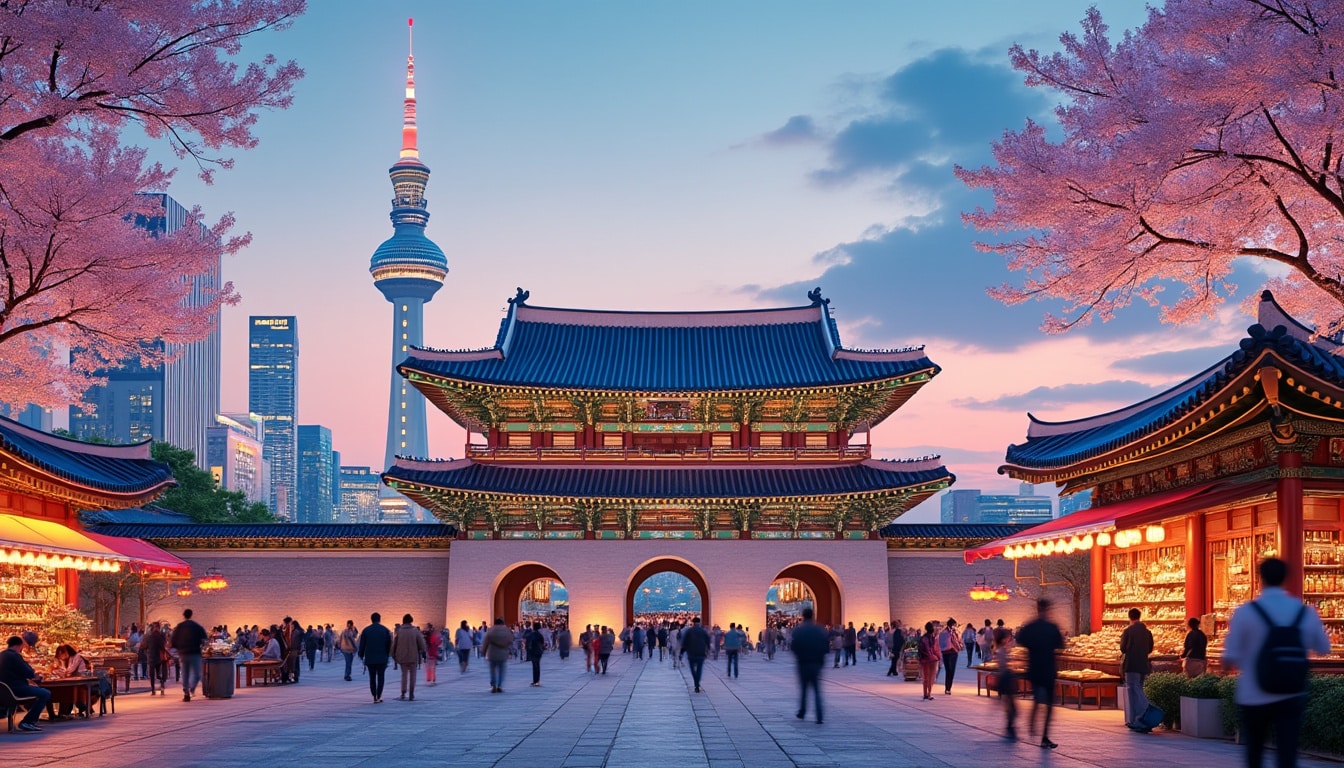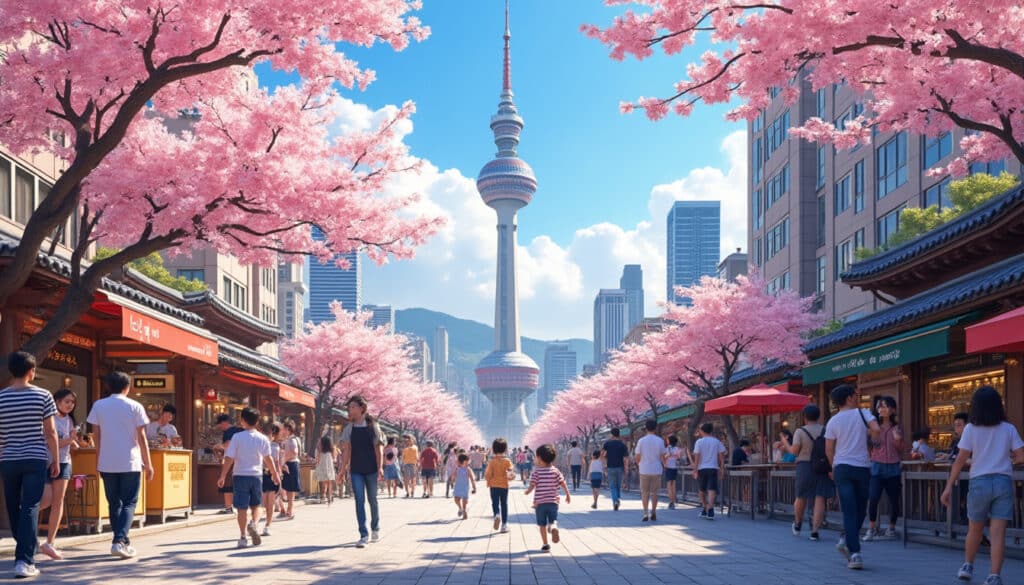Seoul, South Korea’s vibrant capital, stands as a dynamic fusion of traditional culture and modern innovation. The city’s architectural wonders are a testament to its rich history and cutting-edge design principles, weaving a tapestry where ancient palaces coexist with towering skyscrapers. From the breathtaking views at Lotte World Tower to the serene grounds of Gyeongbokgung Palace, Seoul’s skyline offers diverse visual delights. Each neighborhood, be it the bustling streets of Gangnam or the historic alleys of Bukchon Hanok Village, tells a unique story through its structures, making Seoul a living canvas of architectural expression.
Modern Marvels: The Imposing Skyscrapers of Seoul
Seoul’s skyline is an ever-evolving masterpiece, dotted with skyscrapers that symbolize the city’s growth and ambition. Among these, the Lotte World Tower stands as a beacon of architectural brilliance. This towering edifice, soaring to a height of 555 meters, not only claims the title of South Korea’s tallest building but also ranks among the tallest in the world. Designed by Kohn Pedersen Fox Associates, the tower’s sleek, tapered form integrates engineering prowess with aesthetic elegance, embodying Seoul’s futuristic vision. Within its 123 floors, it houses a luxury hotel, offices, residences, and an observation deck offering panoramic views of the city.
Another architectural gem is the Dongdaemun Design Plaza, a creation of the legendary Zaha Hadid and Samoo. This neofuturistic structure captivates with its flowing curves and elongated forms, serving as a major cultural hub within the vibrant Dongdaemun district. Covering an area of 86,574 square meters, this space is a testament to Seoul’s dedication to merging modern design with cultural functionality. Easily accessible by subway and city tour buses, it invites locals and tourists alike to engage with its dynamic spaces.
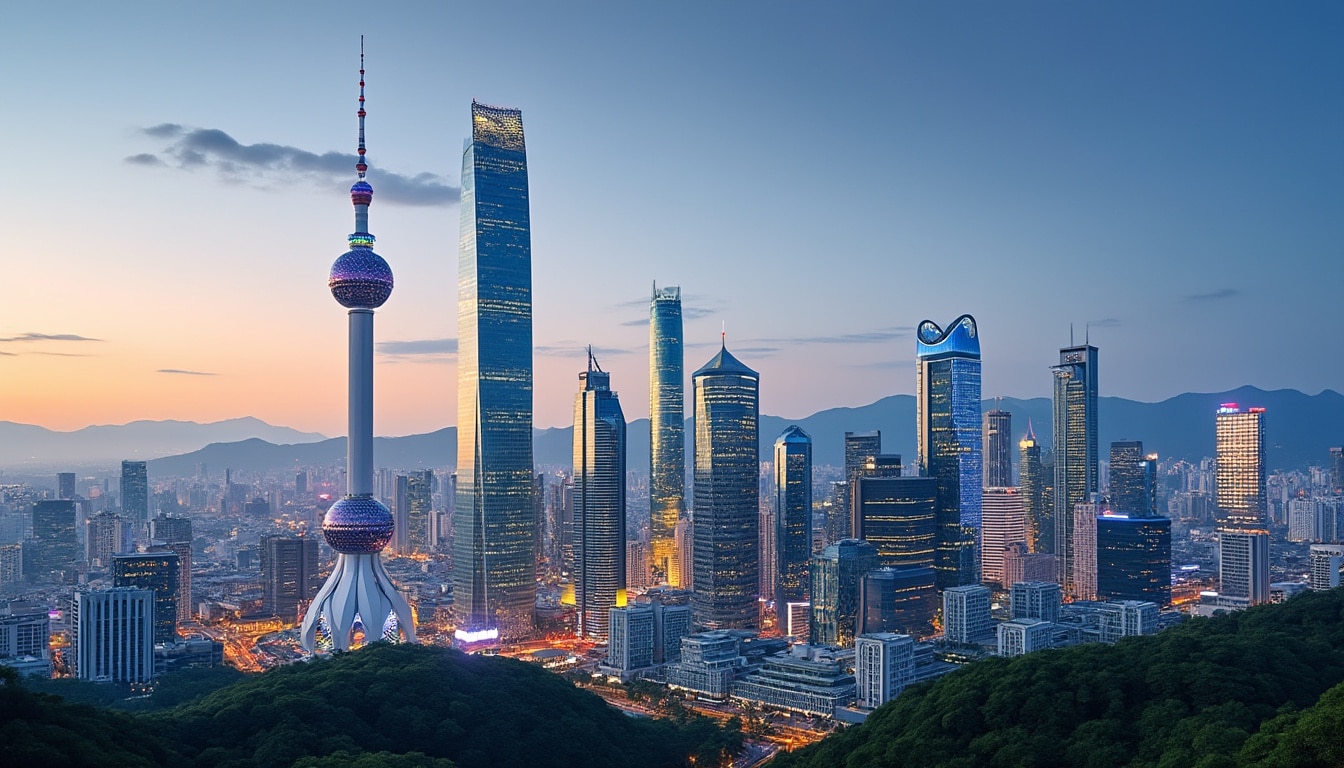
Innovative Structures Leading the Way
The journey through Seoul’s modern architecture is incomplete without mentioning the role of companies like Samsung, LG, and Hyundai. These giants have contributed to Seoul’s skyline through buildings that reflect technological innovation and architectural prowess. The Hyundai Headquarters stands as a testament to innovative design, blending commerce with aesthetic appeal. Similarly, the LG Science Park showcases how corporate spaces are designed to inspire creativity and collaboration.
Beyond corporate headquarter designs, public infrastructures like the Seoul City Hall symbolize modern architectural innovation. Completed in 2013, its wave-like glass facade contrasts starkly with the traditional architecture of the old City Hall, reflecting the blend of old and new. Its interiors are inclusive, integrating green spaces and vertical gardens, signaling a commitment to sustainable practices and community-focused development.
- 🗼 Lotte World Tower: Icon of modern engineering and elegance.
- 🏢 Samsung Headquarters: Blending innovation with architectural design.
- 🏛️ Seoul City Hall: A hub of community engagement and sustainable design.
Traditional Gems: Exploring Seoul’s Historic Palaces and Villages
While modern skyscrapers highlight Seoul’s forward momentum, its historic architecture offers a captivating glimpse into the city’s imperial past. The Gyeongbokgung Palace, an enduring emblem of the Joseon Dynasty, envelops visitors in a world where ancient architectural principles merge with natural harmony. Built in 1395, the palace’s expansive grounds and over 330 buildings exemplify traditional Korean architecture with flavoured hints of Chinese influence, seen in its pavilions, gates, and bridges.
Not far from Gyeongbokgung, the Changdeokgung Palace shines as a UNESCO World Heritage Site. Its gardens, including the famed Huwon Secret Garden, like tapestries of natural beauty, featuring ponds, pavilions, and preserved trees. This palace exhibits a unique architectural style that aligns with the natural topography, providing a sense of tranquility amidst the hustle of modern Seoul.
Historic Neighborhoods Preserving Tradition
The historic Bukchon Hanok Village offers visitors a breathtaking journey into Korea’s past. This charming neighbourhood, nestled between Gyeongbokgung and Changdeokgung Palaces, is lined with hundreds of traditional hanoks, representing the quintessence of Joseon Dynasty architecture. The village’s narrow lanes invite exploration, and walking through its serene pathways feels like a step back in time.
| Palace/Village | Historical Significance | Architectural Elements | Must-See Features |
|---|---|---|---|
| Gyeongbokgung Palace | Main royal palace of the Joseon Dynasty | Wooden frames, pitched roofs | Gwanghwamun Gate, Geunjeongjeon Hall |
| Changdeokgung Palace | Royal residence, UNESCO site | Adaptive layouts with nature | Secret Garden, Injeongjeon Hall |
| Bukchon Hanok Village | Historic neighborhood from Joseon era | Curved roof tiles and heated floors | Narrow alleyways, cultural folk art |
Visiting these sites provides insights into Korea’s architectural heritage and the cultural significance that continues to influence modern designs. Exploring the intricate beauty of these structures offers a serene escape from the city’s bustling life.
Innovations in Sustainable Design: Pioneering Green Architecture
As Seoul propels into the future, sustainability becomes a cornerstone of its urban planning and architectural designs. Green architecture in Seoul isn’t merely a trend but a well-founded commitment. A prime example is the retrofit of an old highway into the Seoul Skygarden. This innovative project, led by the Dutch firm MVRDV, transforms a former overpass into a lush public park, showcasing Seoul’s dedication to reclaiming forgotten urban spaces for community use.
Among the leaders in this green revolution is the Hanwha Building in Seoul, which integrates solar panels and eco-friendly systems to significantly reduce its environmental footprint. Similarly, the Hyundai Motorstudio embraces sustainable practices by featuring rooftop gardens and mechanisms for utilizing renewable energy. These initiatives reflect a broader commitment from conglomerates like Hyundai and Samsung to incorporate environmental foresight into urban development.
- 🌿 Seoul Skygarden: Transformative urban space promoting green living.
- 🏢 Hanwha Building: A model of energy-efficient architecture.
- 🚗 Hyundai Motorstudio: Sustainability integrated with technology.
Championing City-Wide Sustainable Policies
Seoul’s government has laid out comprehensive policies aiming to bolster environmental sustainability within urban development. This includes encouraging the construction of energy-efficient buildings, promoting public transportation to reduce emissions, and investing in green technology. Iconic eco-friendly projects such as the POSCO Green Building stand as benchmarks for sustainable design, integrating smart technologies to monitor and reduce energy consumption.
These efforts extend beyond individual buildings, with entire districts like Gangnam emphasizing mixed-use developments that minimize commuting needs and encourage walking and cycling. By weaving sustainability into its urban fabric, Seoul continuously sets new standards for green cities in Asia and beyond.
Cultural Significance and Community Spaces in Seoul’s Architecture
Seoul’s architecture is not merely structural; it’s cultural, acting as a custodian of the city’s rich history and a space for communal interaction. Cultural motifs embedded within modern structures create a dialogue between the past and present, as seen in places like the Leeum, Samsung Museum of Art. Where traditional Korean art meets international exhibitions, curated within architecturally striking buildings by Mario Botta and Jean Nouvel.
Another significant cultural site is the Seodaemun Prison History Hall. This museum-styled prison commemorates Korea’s struggle for independence during the Japanese occupation, preserving the cells and telling stories through poignant exhibitions. These sites serve not only as historical reminders but also as community spaces for education and reflection.
| Architectural Landmark | Community Role | Cultural Influence | Activities |
|---|---|---|---|
| Leeum, Samsung Museum of Art | Gallery space and cultural events | Melds traditional and contemporary art | Exhibitions, workshops |
| Seodaemun Prison History Hall | Educational museum and historical site | Preserves Independence movement history | Tours, exhibitions |
| Seoul City Hall | Public events and cultural hub | Synthesis of past and future elements | Exhibitions, community gatherings |
Spaces Fostering Social Cohesion
Seoul’s architectural feats aren’t confined to cultural reflection alone; they are integral in fostering social interaction. Spaces like the public areas around buildings in the MMCA (National Museum of Modern and Contemporary Art) serve as vibrant canvases for social activities, exhibitions, and cultural dialogues. Additionally, mixed-use developments, particularly in districts like Gangnam, incorporate offices, retail, and recreation spots, creating dynamic communities.
These spaces are more than structures; they are lifelines of the city, encouraging a vibrant societal fabric that celebrates Seoul’s past while nurturing its future. Whether it’s a community event in Kyobo Tower or a cultural festival in Seoul Square, these architectural designs are a testament to Seoul’s commitment to building inclusive, engaging social environments.
Exploring Seoul’s Architectural Wonders: A Guide to Must-Visit Sites
Seoul’s architectural landscape is a treasure trove of discovery, attracting enthusiasts and casual visitors alike with its captivating mix of old and new. Touring these structures provides insight into the city’s architectural evolution. Here are some must-visit sites that define Seoul’s urban essence.
Begin your journey at the glorious Gyeongbokgung Palace, an icon of Korea’s historical architecture. Then, transition to modernity with the innovative Lotte World Tower and its panoramic vistas of Seoul. For those intrigued by cultural narratives, a visit to the traditional Bukchon Hanok Village is essential to experience Seoul’s preserved heritage.
Further explore the cultural dimensions at the Leeum, Samsung Museum of Art, renowned for its stunning architecture and comprehensive art collections. In the heart of Seoul’s busy corridors, visit the historic Seodaemun Prison History Hall, offering poignant lessons from Korea’s past through its exhibitions.
- 🏰 Gyeongbokgung Palace: Experience traditional Korean royal architecture.
- 🌆 Lotte World Tower: Witness Seoul from its highest observation point.
- 📜 Bukchon Hanok Village: Walk through a living museum of traditional houses.
- 🎨 Leeum, Samsung Museum of Art: A fusion of classic and contemporary art.
- 🏛️ Seodaemun Prison History Hall: Engaging historical narratives.
Captivating Hidden Gems
Seoul extends beyond its well-trodden paths, offering hidden architectural gems such as Ihwa Mural Village, where art and architecture intertwine in vibrant murals. Haneul Park offers a tranquil escape with its minimalist structures and sweeping views, forging a seamless harmony between architecture and nature.
The journey through Seoul’s iconic structures and hidden gems presents a holistic view of the city’s architectural repertoire, narrating tales of innovation, tradition, and community. As you explore Seoul, these architectures unfold stories that encapsulate the soul of a city constantly balancing its rich heritage with its innovative future.
FAQ
- ❓ What is the tallest building in Seoul?
The tallest building in Seoul is the Lotte World Tower, standing at 555 meters. - ❓ Can I visit the palaces year-round?
Yes, Seoul’s palaces like Gyeongbokgung and Changdeokgung are open year-round with guided tours available. - ❓ Are there any architectural events or festivals in Seoul?
Seoul hosts various architecture and design festivals annually, celebrating both modern marvels and traditional architecture. - ❓ What are some eco-friendly architectural examples in Seoul?
The Seoul Skygarden and Hanwha Building are prime examples of eco-friendly architecture in Seoul, showcasing sustainable practices.
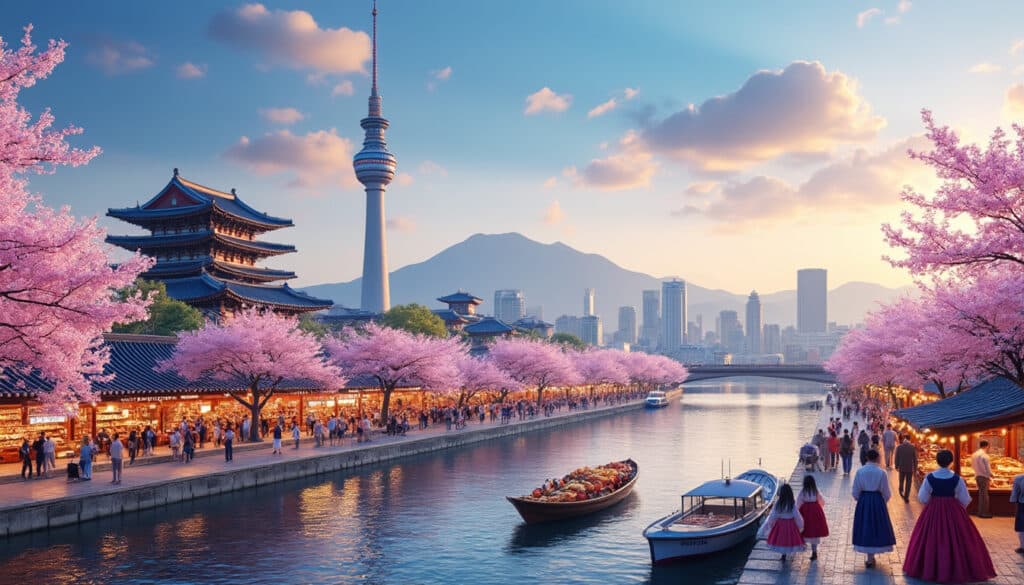
Fun Facts & Curiosities About Seoul
Seoul, a dazzling fusion of modernity and tradition, captivates every visitor with its vibrant blend of history, culture, and innovation. From being a technological metropolis to a cultural capital, the city offers a myriad of interesting facets waiting to be…
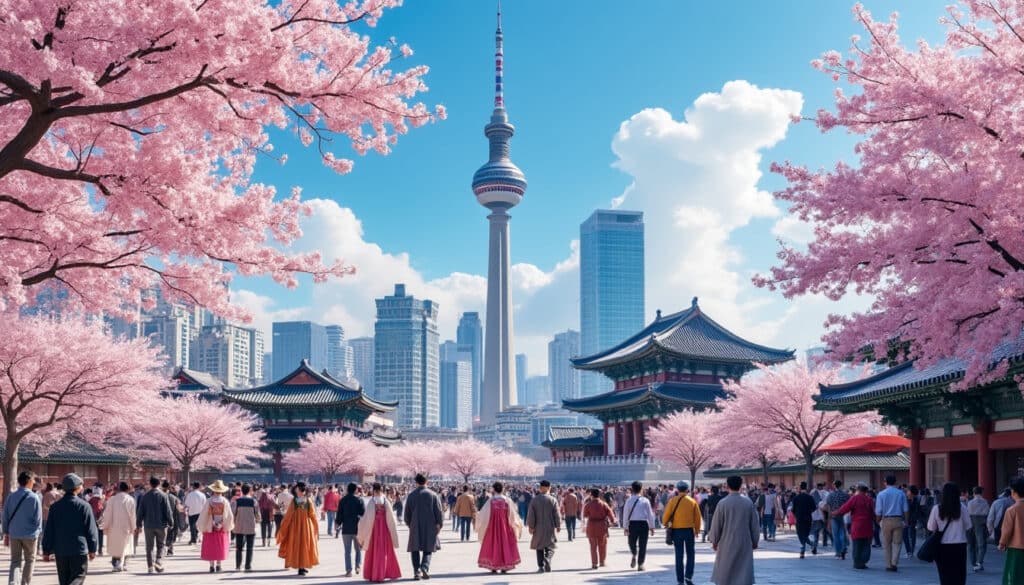
Seoul, the bustling capital of South Korea, seamlessly integrates the ancient with the ultramodern, capturing the hearts of all who visit. Enveloped in history, culture, and innovation, this dynamic city is not just a hub for technology and business but…

Demographics and geography of Seoul
Seoul, the vibrant capital of South Korea, stands as a testament to the country’s rapid development and cultural evolution. Nestled along the banks of the Han River in the northwestern corridor of the Penninsula, Seoul represents a harmonious blend of…
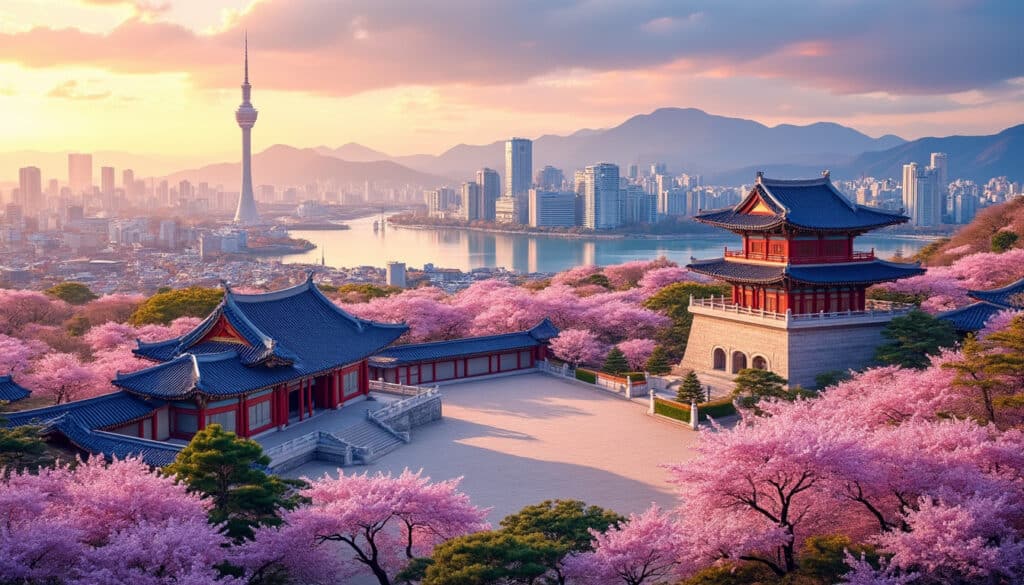
Seoul, the bustling capital city of South Korea, boasts a rich history that stretches over 2,000 years. From its ancient beginnings during the Baekje Kingdom to its modern role as a global city, Seoul has played a pivotal role in…
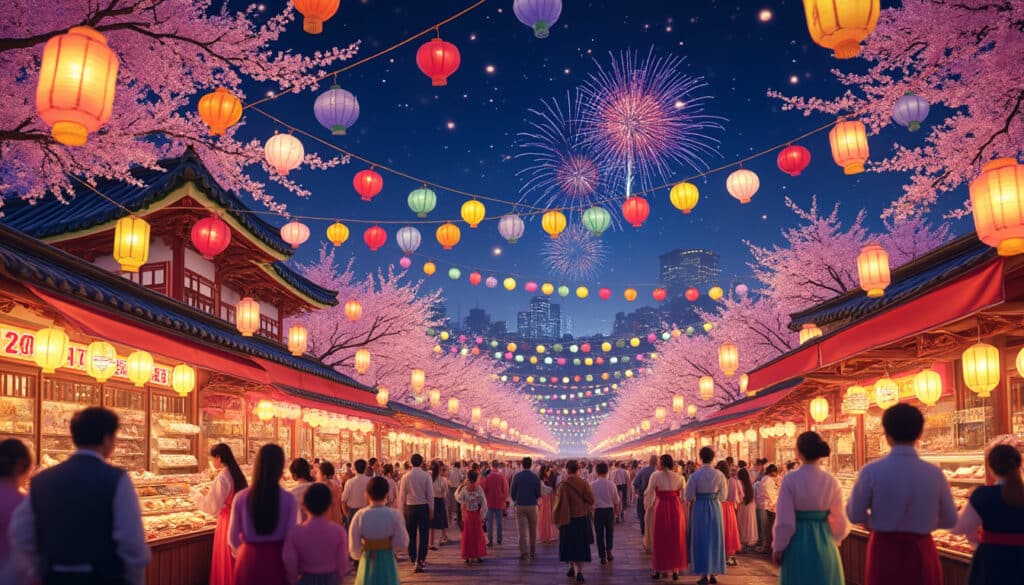
Holidays and celebrations in Seoul
Seoul, the heart of South Korea, is where traditions meet modernity, creating a unique tapestry of cultural and contemporary celebrations. The city, known for its vibrant lifestyle and rich history, transforms into a festive wonderland during public holidays. From historical…
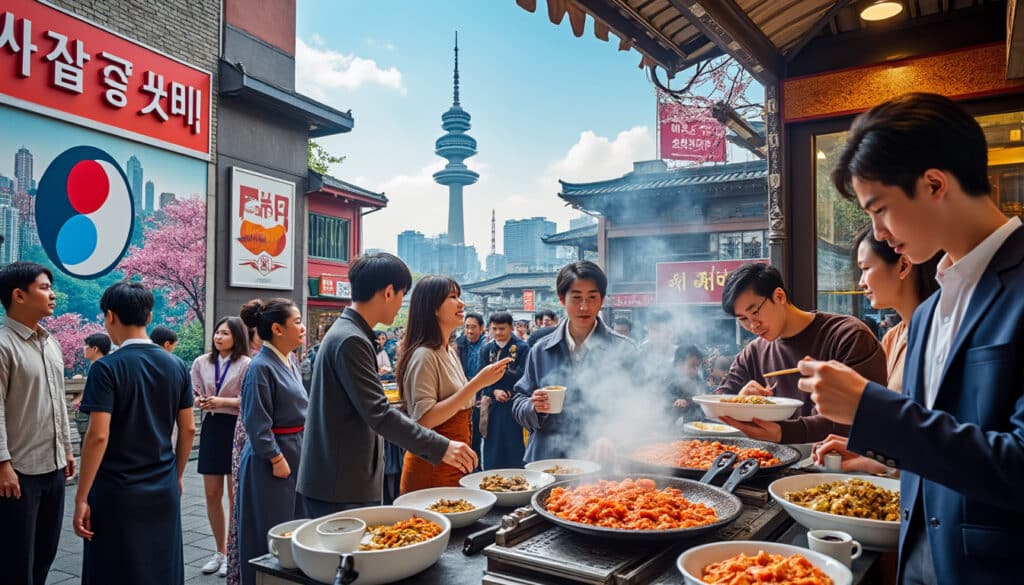
Language and spelling of Seoul
Seoul, the bustling capital city of South Korea, is not just a hub of rapid technological advancements and modern culture, but also a treasure trove of linguistic history and evolution. The city’s language and spelling conventions offer a window into…
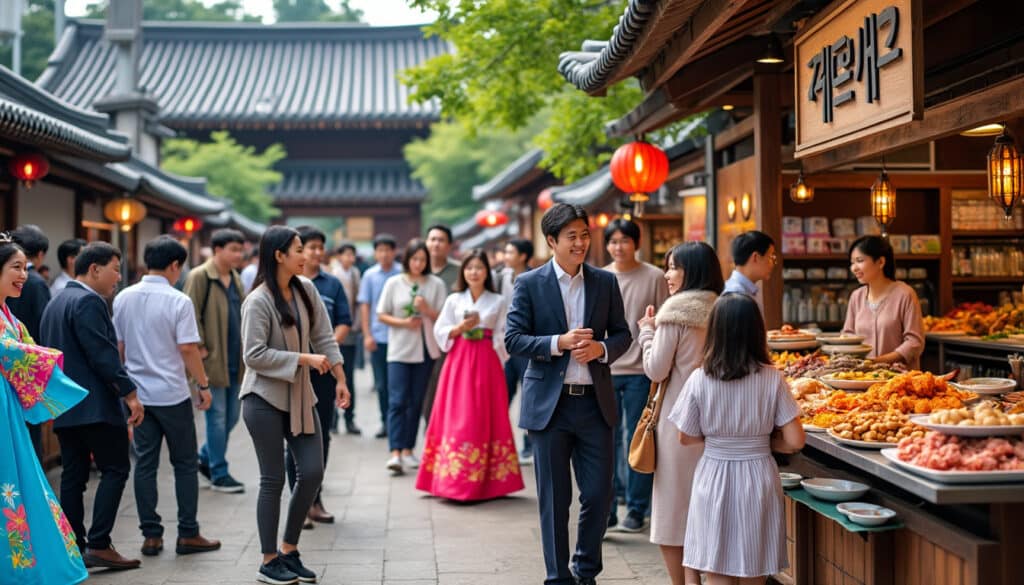
Local tips for tourists in Seoul
Seoul, the vibrant capital of South Korea, offers a fusion of ultra-modern skyscrapers and ancient palaces, bustling markets, and serene temples. However, while embarking on a journey to this dynamic metropolis, tourists often miss the oddly charming, unconventional spots that…
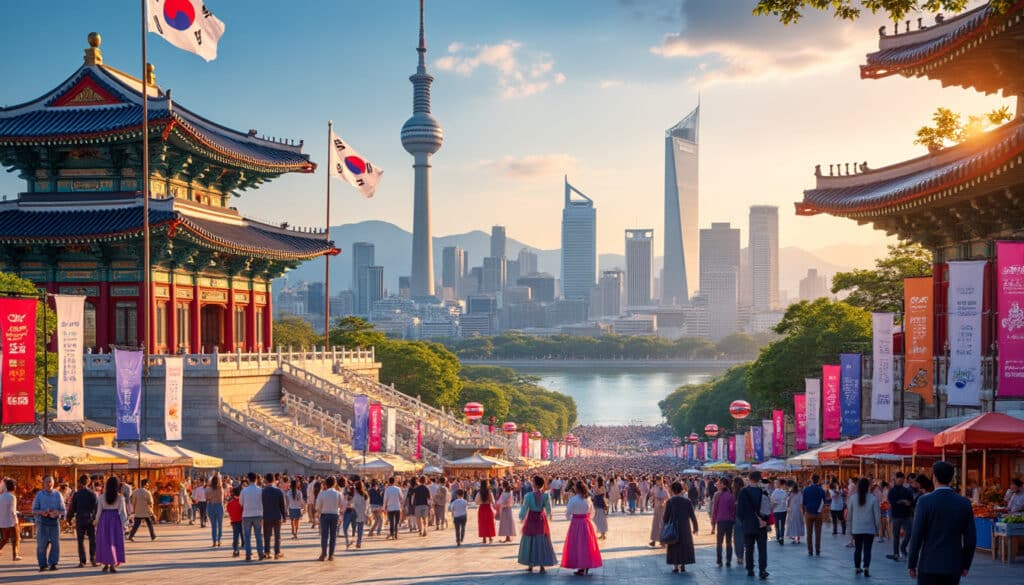
Names, flags, and identity of Seoul
Seoul, a dazzling city that serves as the heart of South Korea, has more to offer than its bustling streets, futuristic skyscrapers, and vibrant culture. Its essence is interwoven with the intriguing tapestry of its names, symbols, and identity. The…
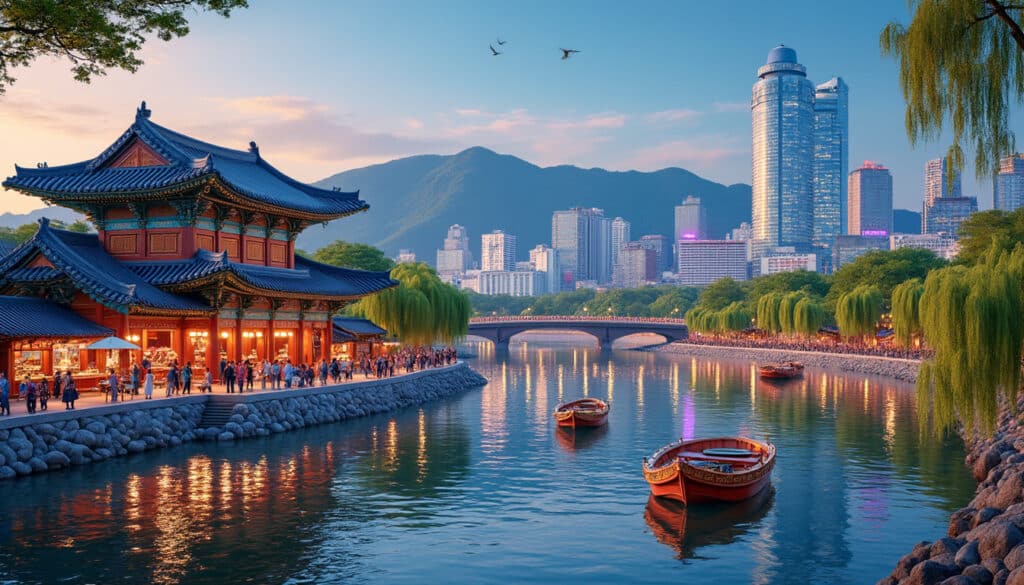
Reputation and identity of Seoul
Seoul, the pulsating heart of South Korea, is a city that gracefully bridges the gap between the past and the future. Known for its towering skyscrapers, neon-lit streets, and a burgeoning tech industry alongside historic palaces, tranquil temples, and bustling…
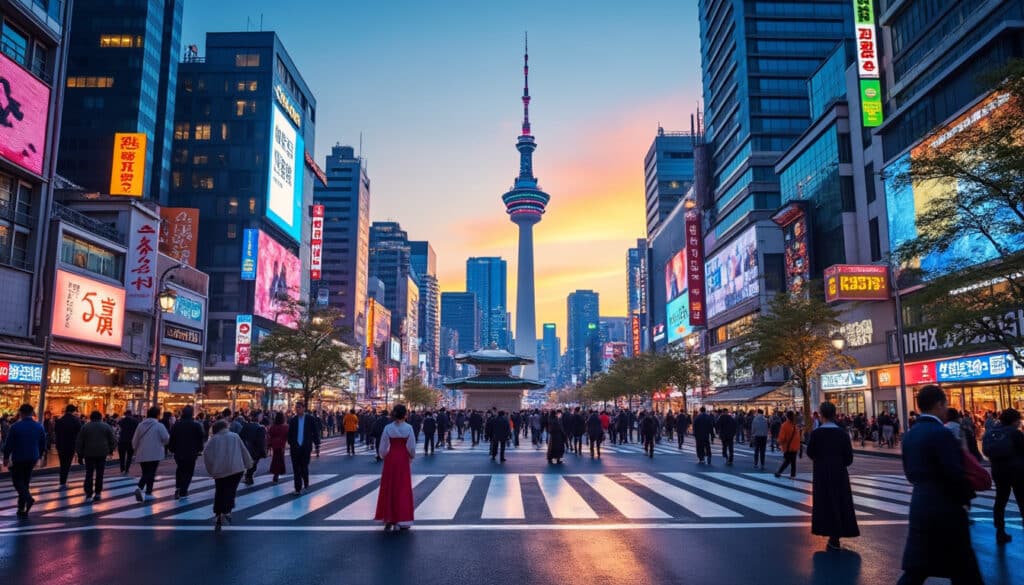
Seoul, a sprawling city that seldom sleeps, is a vibrant blend of tradition and modernity, pulsing with energy around the clock. Understanding time in this bustling metropolis is crucial for both residents and visitors, not only for practical planning but…
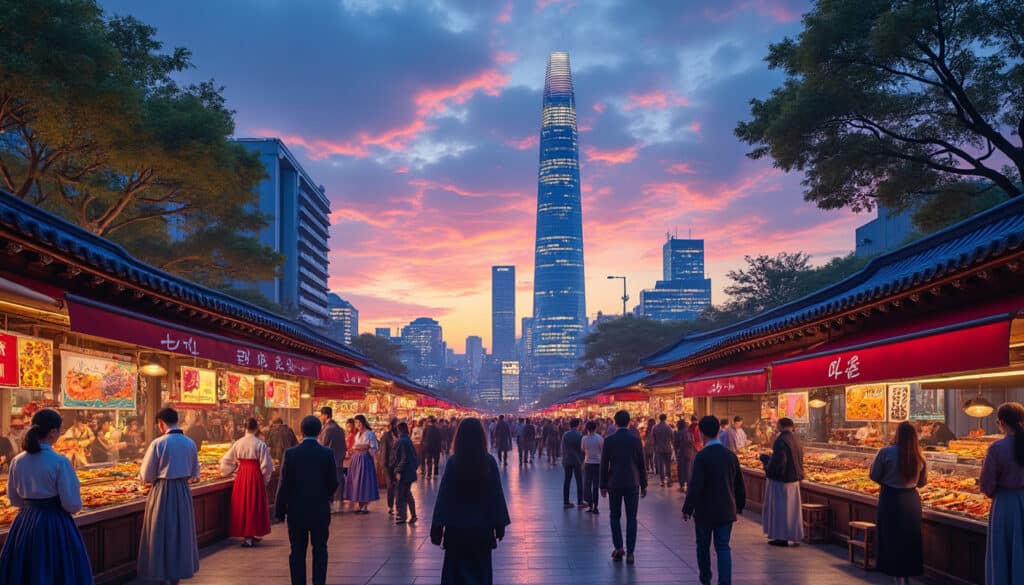
Unusual facts and social issues in Seoul
Seoul, a dazzling tapestry of ancient history and contemporary vibrance, offers explorers an eclectic mix of the unexpected and the familiar. As a hub of innovation with deep cultural roots, Seoul embodies a fascinating blend of contrasts that draw millions…
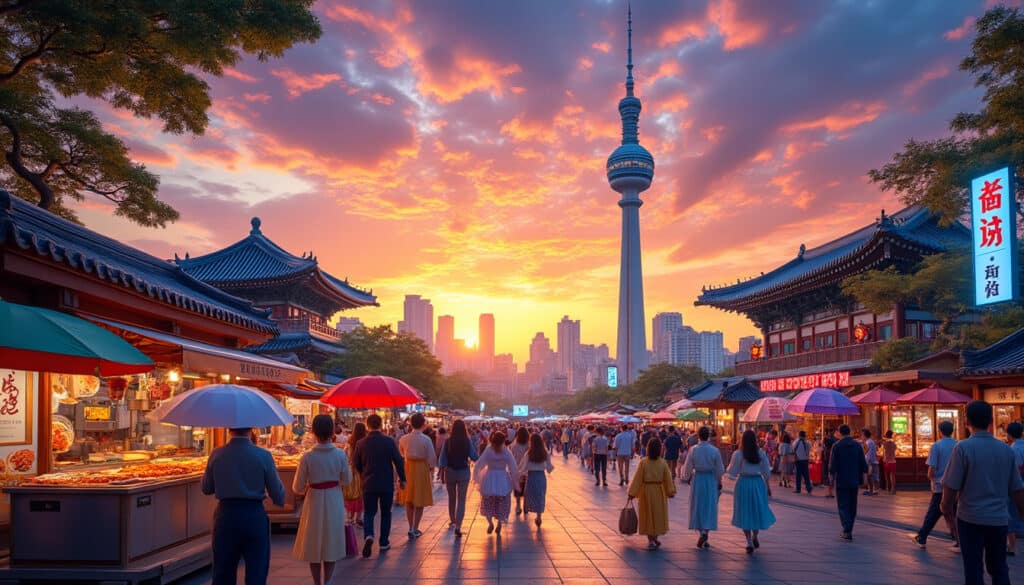
What does Seoul look, smell, feel like?
Seoul, South Korea’s sprawling metropolis, is a city that engages all the senses. As you navigate its bustling streets, you’re enveloped by a panorama of contrasting elements: sleek skyscrapers shoot up next to ancient palaces, neon-lit alleyways buzz with life…

